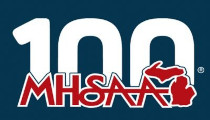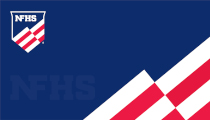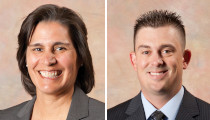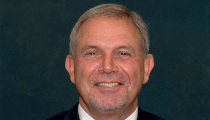Alberta Association Bringing Unified Sports to Canada
By Jason Haddix on November 06, 2015 Students with Disabilities Print
The Alberta Schools’ Athletic Association (ASAA) has taken the initial steps to implement Canada’s first interscholastic Unified Sports program through a partnership with Special Olympics Alberta (SOA). The initiative became possible after the ASAA, an affiliate member of the NFHS, was awarded a grant with the intended use of increasing the opportunities for under-represented populations.
Unified Sports has been a Special Olympics program since 1989 with the first interscholastic partnership occurring in 1992 between the Connecticut Interscholastic Athletic Conference and Special Olympics Connecticut.

John Paton
John Paton, ASAA executive director, said he has tracked the success of Unified Sports programs in the United States through his involvement with the NFHS.
“Over the years, I have watched the growth of Unified Sports and felt we need it in Canada,” Paton said. “I realize that it would need funding and we tend to not be as funded for school sports as are programs in the U.S.”
During a meeting of the NFHS Citizenship/Equity Committee, on which Paton serves as the Canadian representative; he met with Brian Smith, assistant executive director with the Washington Interscholastic Activities Association (WIAA), about steps the WIAA took at the infancy of its program.
“Brian was talking about how the WIAA just completed its first full year with Unified Sports and how it was going so well,” Paton said. “I was very encouraged by that, so when I returned from the meeting in Indianapolis, I met with Special Olympics and our government agency and was informed of the grant.”
The four-year grant was used, in part, to hire the ASAA’s Program Coordinator for Unified Sports Shanna Kurylo. Kurylo has a background in recreation administration, and has experience working with Special Olympics as a volunteer figure skating coach.
During this first year (2015-16) of implementation, ASAA and SOA are working closely to identify schools to begin pilot programs. Paton indicated chosen schools will likely already have a relationship with Special Olympics and employ specifically-trained educators.
Paton recognizes that there are potentially thousands of young people that could be impacted by the program. The ASAA is doing its due diligence to ensure the program has a strong foundation upon its launch.
“We have a good sense of the possibilities of the program,” Paton said. “Now it is going to be a matter of how we make it work on the ground.”
The ASAA is still determining what sports will be offered in the Unified Sports program. The decision making process consists of several steps including Kurylo conducting researching into what each state association is offering, and then evaluating the results based on the needs identified by the ASAA and SOA.
“Once we get the feedback from the states about which sports are most effective, we will then make the decision on the direction we want to go,” Paton said.
Paton said that if the ASAA can limit the number of variables, the greater likelihood that schools will get onboard.
“It is still early in the process,” Paton said. “We are the first in Canada to do this, so we have no real comparison to anything else that has happened in this country. It is an exciting time for us as we move forward.”







